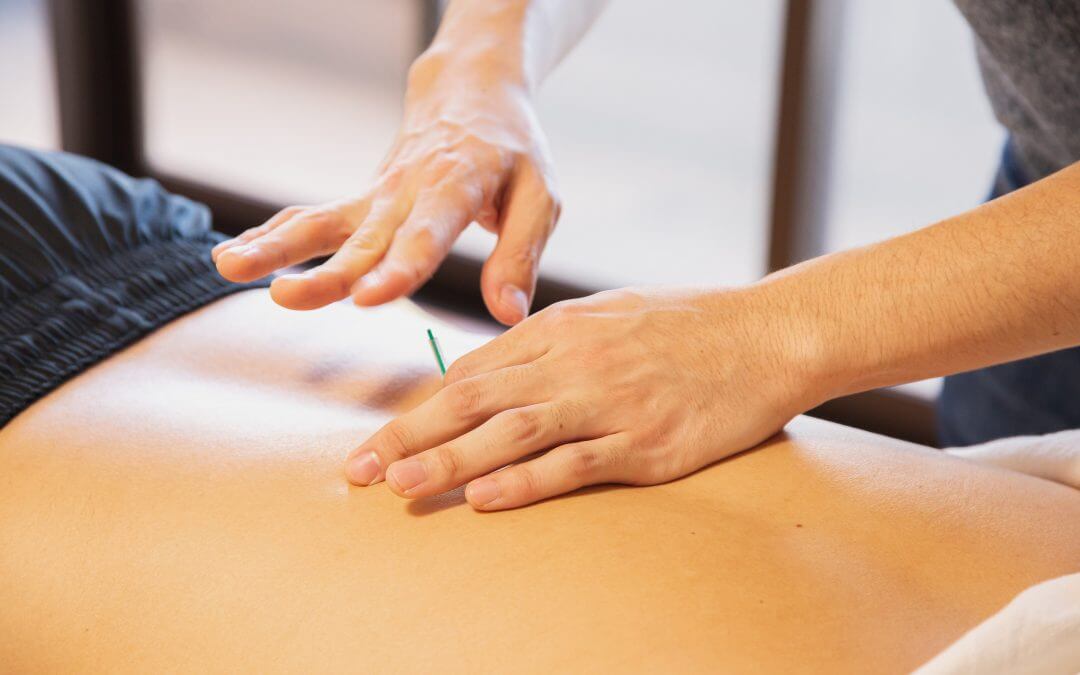Almost everyone has heard of acupuncture, which is the traditional Chinese medical practice of the insertion of needles along the body’s energy meridians, in order to restore balance to what is referred to as ‘qi’, the body’s vital energy.
At Livewell, we practice a Westernized form of acupuncture, called “dry needling.” While the two methods are quite similar, dry needling applies Western medical principals to the practice of acupuncture. Today’s post is aimed at filling you in on exactly how dry needling works, and the primary reasons you might opt for it.
How Dry Needling Works
An outside observer might never know that a dry needle therapist is not practicing traditional acupuncture. Like traditional acupuncture, dry needling involves using ultra-thin needles to stimulate certain parts of the body below the skin. No liquids are administered via the needles, thus the term ‘dry.’ While traditional acupuncture focuses on a holistic approach to the body’s energy centres, dry needling focuses specifically on bands of tight muscle, which the practitioner will refer to as ‘trigger points.’ The principle behind dry needling is based upon the fact that the needles stimulate the muscle area, and trigger relaxation within the band and stimulate blood flow to the area.
When activating a trigger point and forcing localized blood flow and muscle relaxation, dry needling:
- Reduces pain by diverting the pain signal away from the spinal cord.
- Help ‘reprogram’ the area to restore natural muscle activation patterns.
- Improves range of motion.
- Reduces inflammation.
- Stimulates the body’s natural healing reflex.
What Primary Conditions Does Dry Needling Treat?
Dry needling is most effective when treating orthopedic conditions. These include:
- Head and Neck Pain – headaches and migraines, whiplash pain, osteoarthritis, degenerative joint disease.
- Back and Hip Pain – herniated disc, degenerative disk disease,
- Hand and Wrist Pain – carpal tunnel syndrome.
- Shoulder Pain – bursitis, tendonitis, rotator cuff, frozen shoulder.
- Elbow Pain – tennis and golfer’s elbow
- Foot and Shin Pain – plantar fasciitis, shin splints, metatarsalgia, gout.
- Other Painful Conditions – ear, eye, dental, orthodontic. These can include cavity pain, tooth impaction, and root issues as well as tinnitus and eye strain.
- General Painful Conditions – post-surgical pain, vehicular accident pain, work injury, athletic and sports-related pain, osteoarthritis, degenerative joint disease, acute and chronic tendonitis.
The Science Behind Dry Needling
Still with us? You must be very interested in the topic, so we’ll get technical. As mentioned above, although the therapy may look similar, the mechanism of dry needling differs greatly from traditional acupuncture. When a dry needling practitioner assesses an area, they identify special muscular areas known as myofascial trigger points. When stimulated with a needle, these points cause a local twitch response, which activated endogenous opioids, which then counteract pain.
The other major mechanism involves the stimulation of blood flow. The introduction of trauma (minimal as it is) to the muscle areas activates the body’s ‘mechanoreceptors,’ which sends a signal to the area that help is required. The body responds by sending oxygen-carrying blood to the area.
Without getting even more technical, the result of the above body reactions is a decrease of pain through the opioid release and the promotion of healing, relaxation, and anti-inflammation through the blood flow.
Why Choose Dry Needling Over Traditional Acupuncture?
At Livewell, we recommend our clients take a multi-faceted approach to dealing with painful conditions. We’re not here to praise or promoted one form of healing over another. Each individual is unique and will respond differently to a variety of approaches. We’ve chosen to offer dry needling at LiveWell because it is a practice founded in the principles of Western medicine. Dry needling treats a much narrower range of conditions than acupuncture does, simply because of the specific science that underpins the muscle stimulation association with dry needling. If you are someone that prefers hard science and an evidence-based approach to traditional practice, then chances are dry needling is the right approach for you.
Thinking of trying dry needling? We invite you to contact us to discuss whether this therapeutic process might be the right approach to your condition. For more information on this service, we invite you to check out our acupuncture services page!

